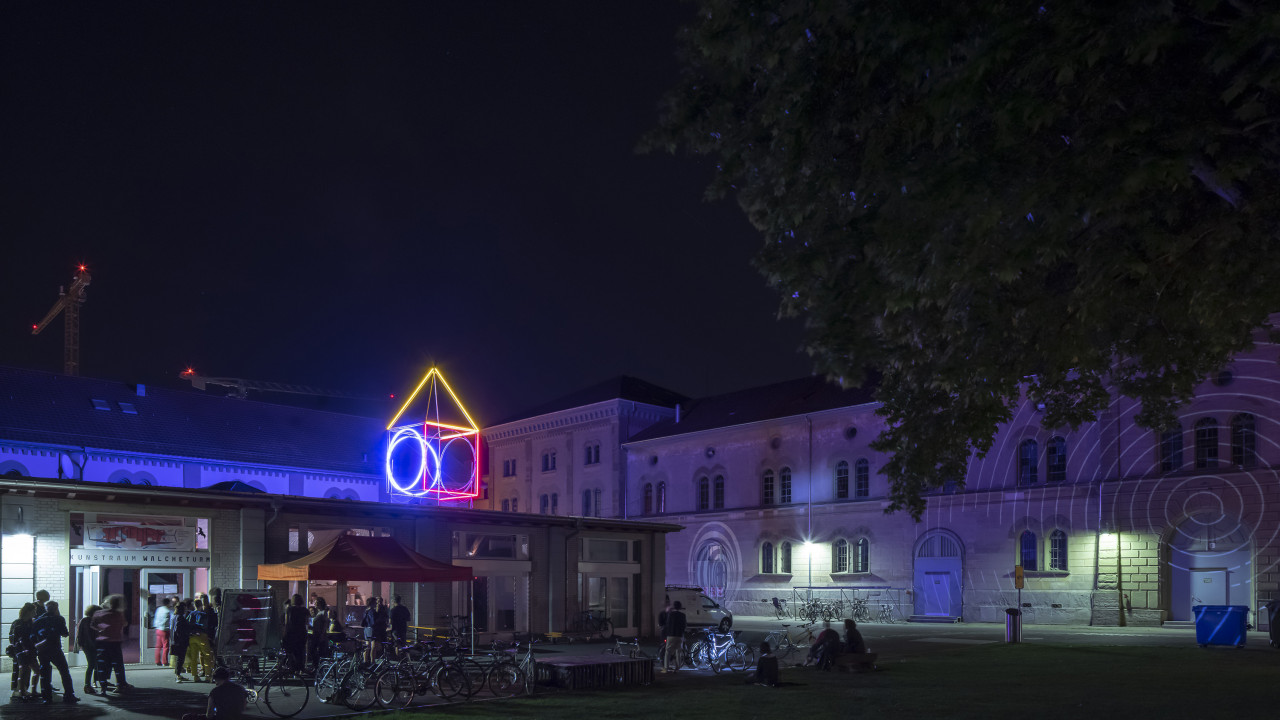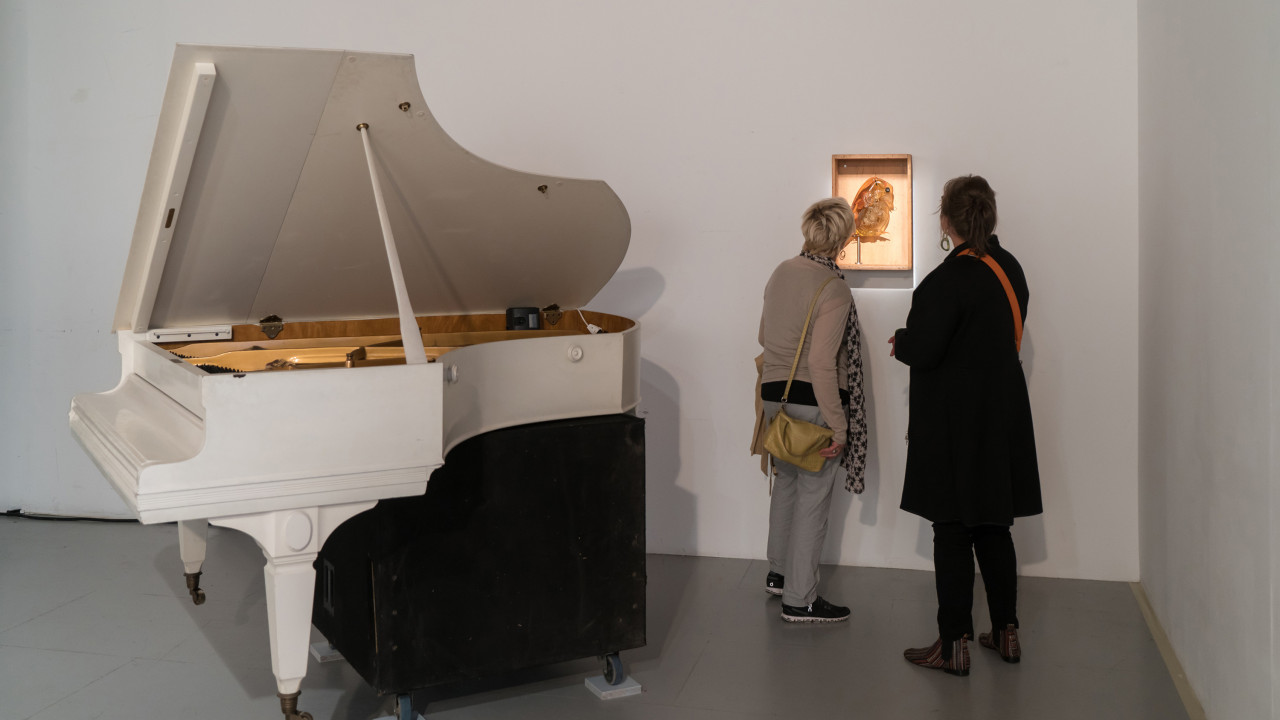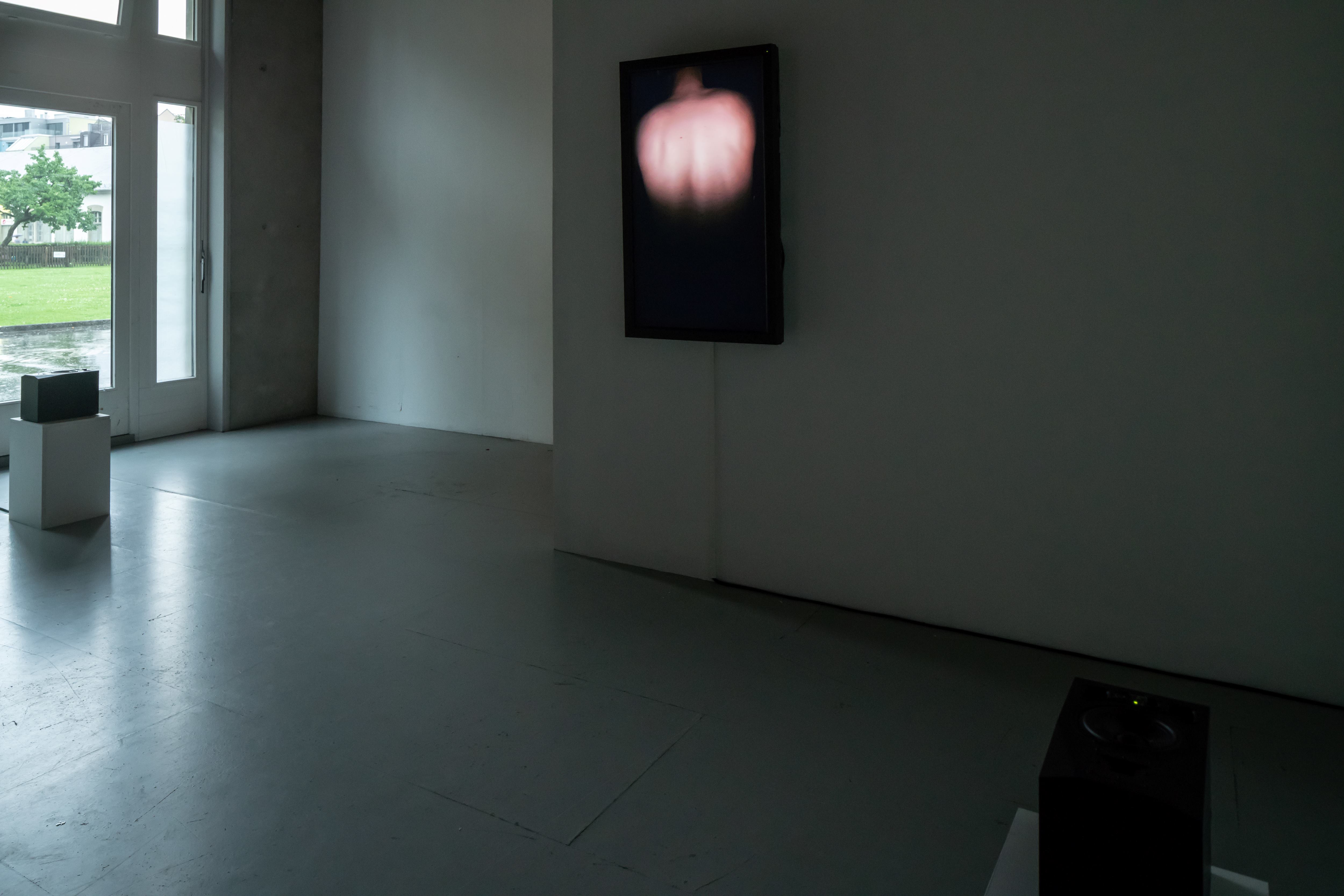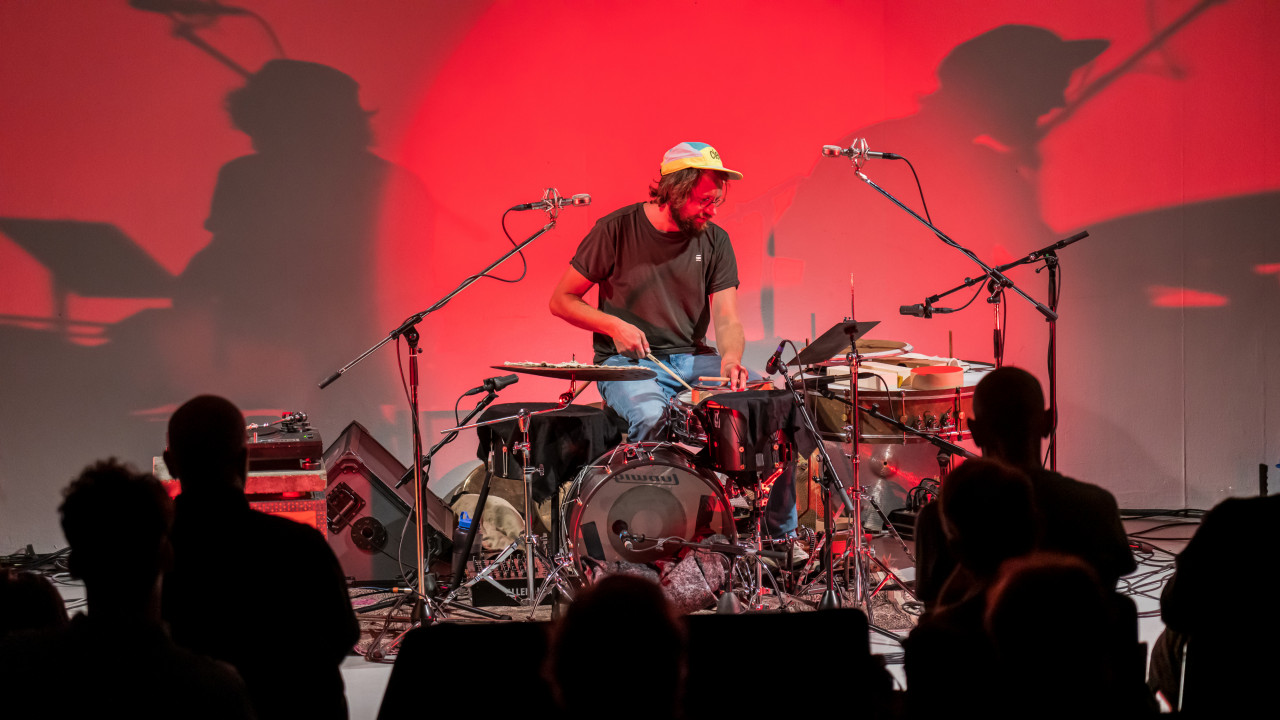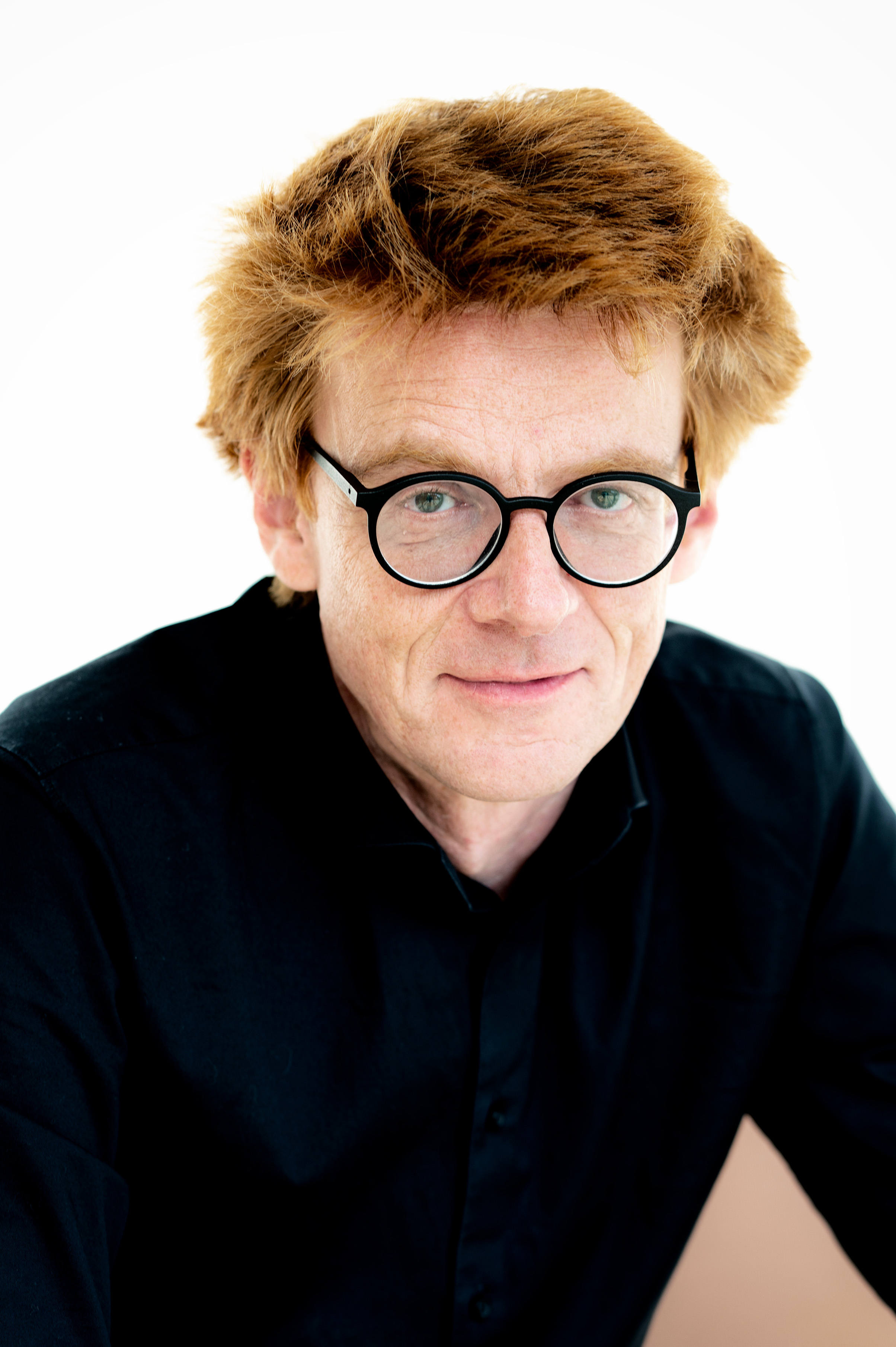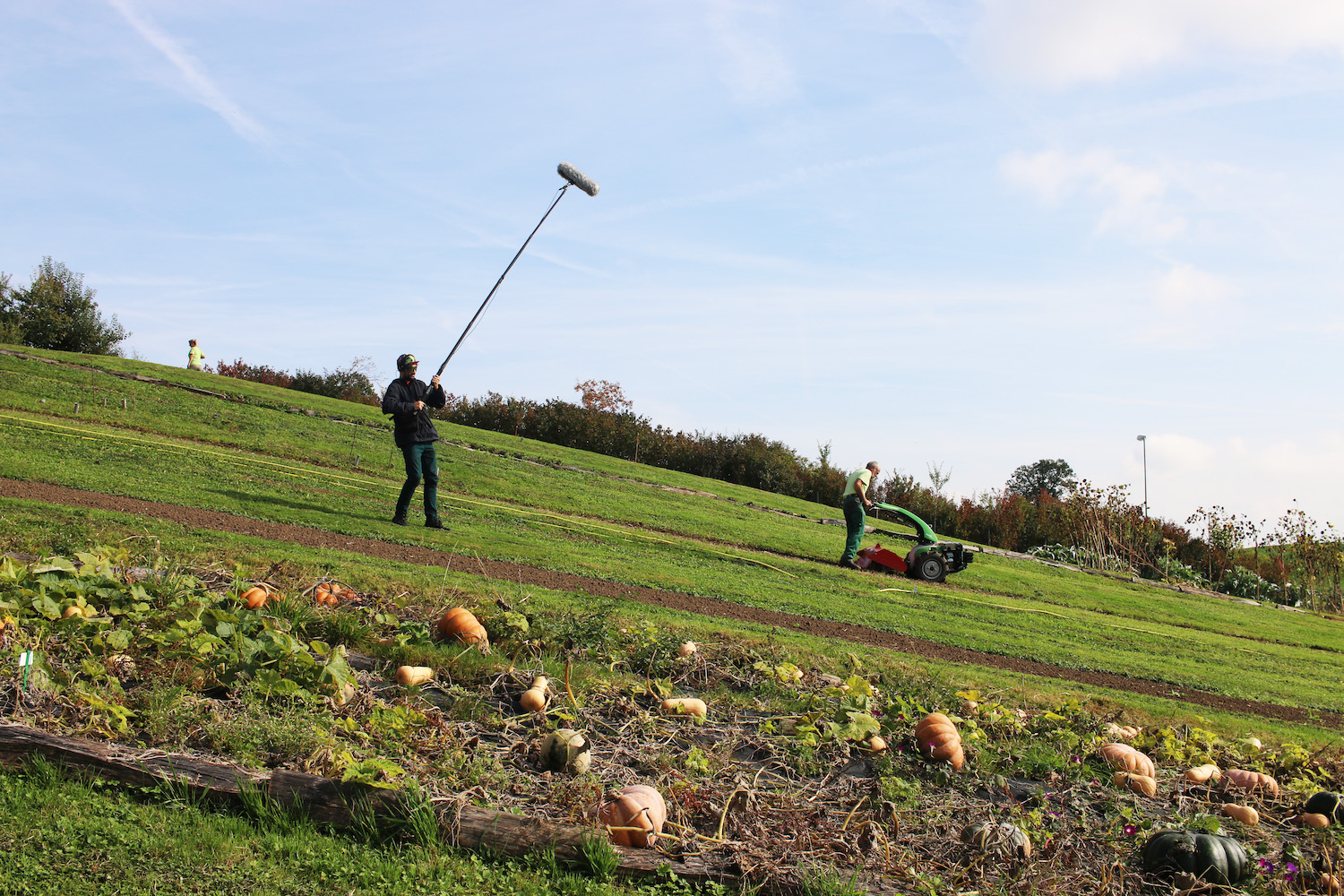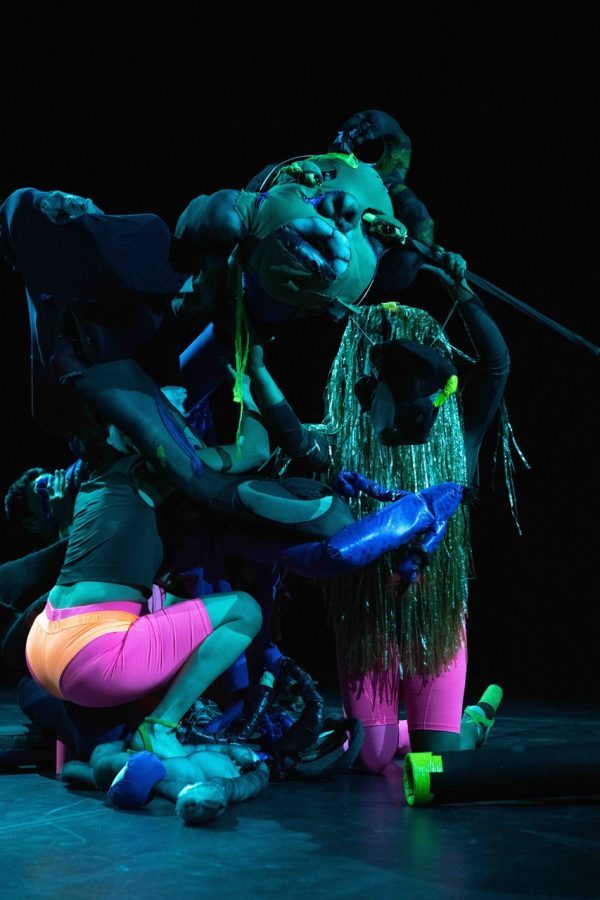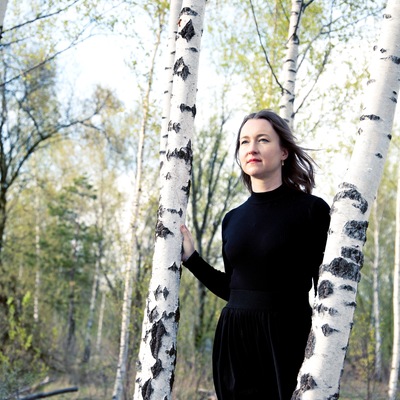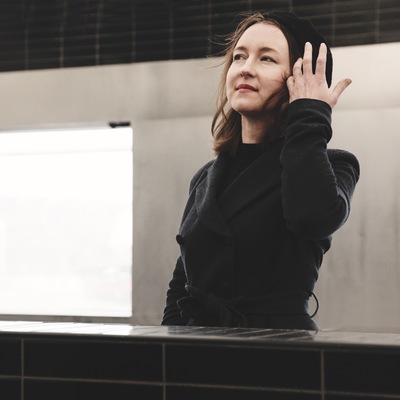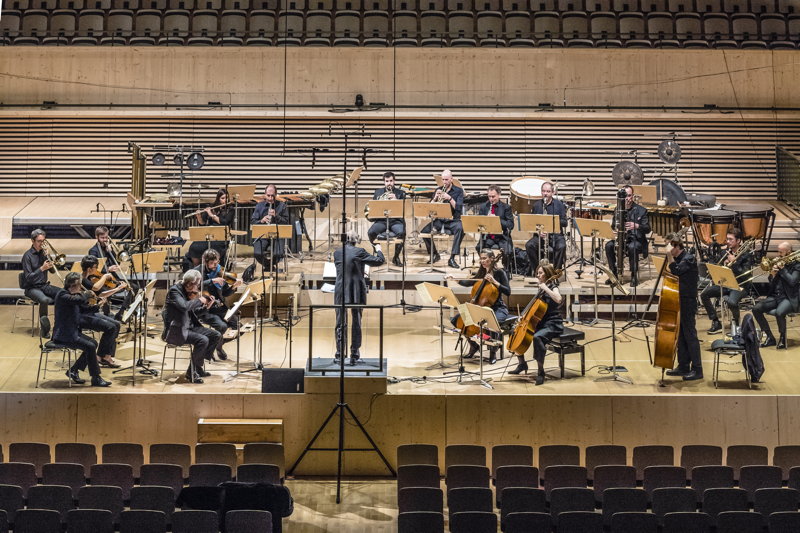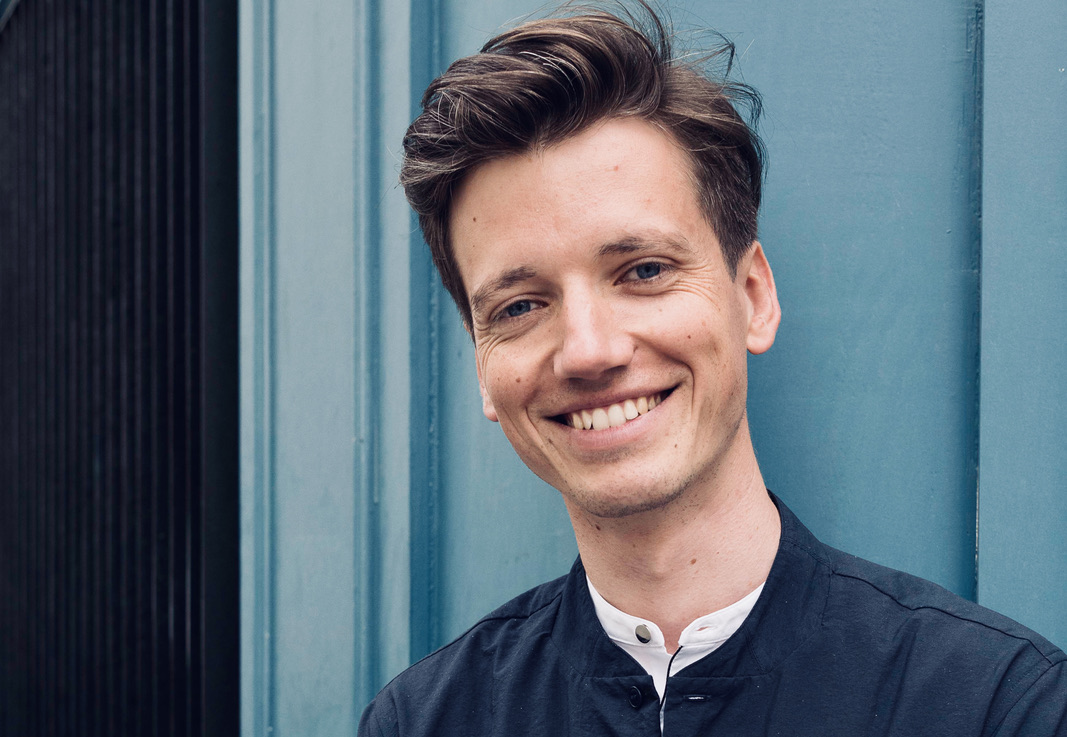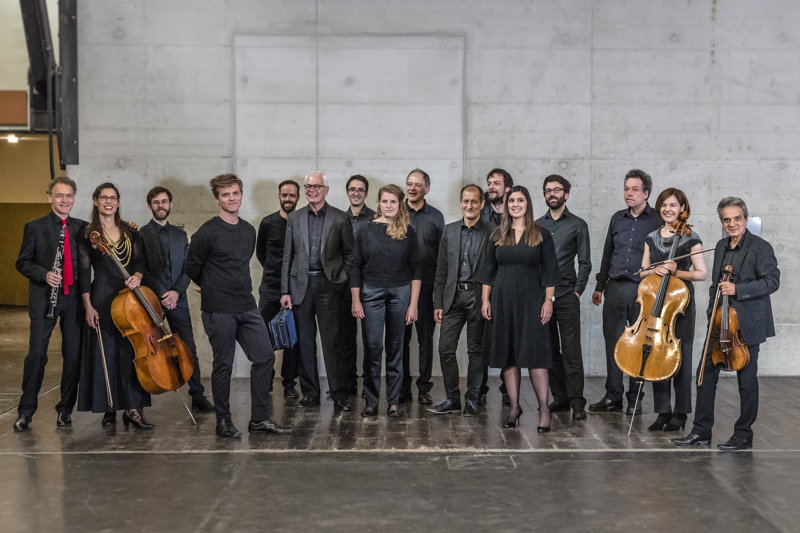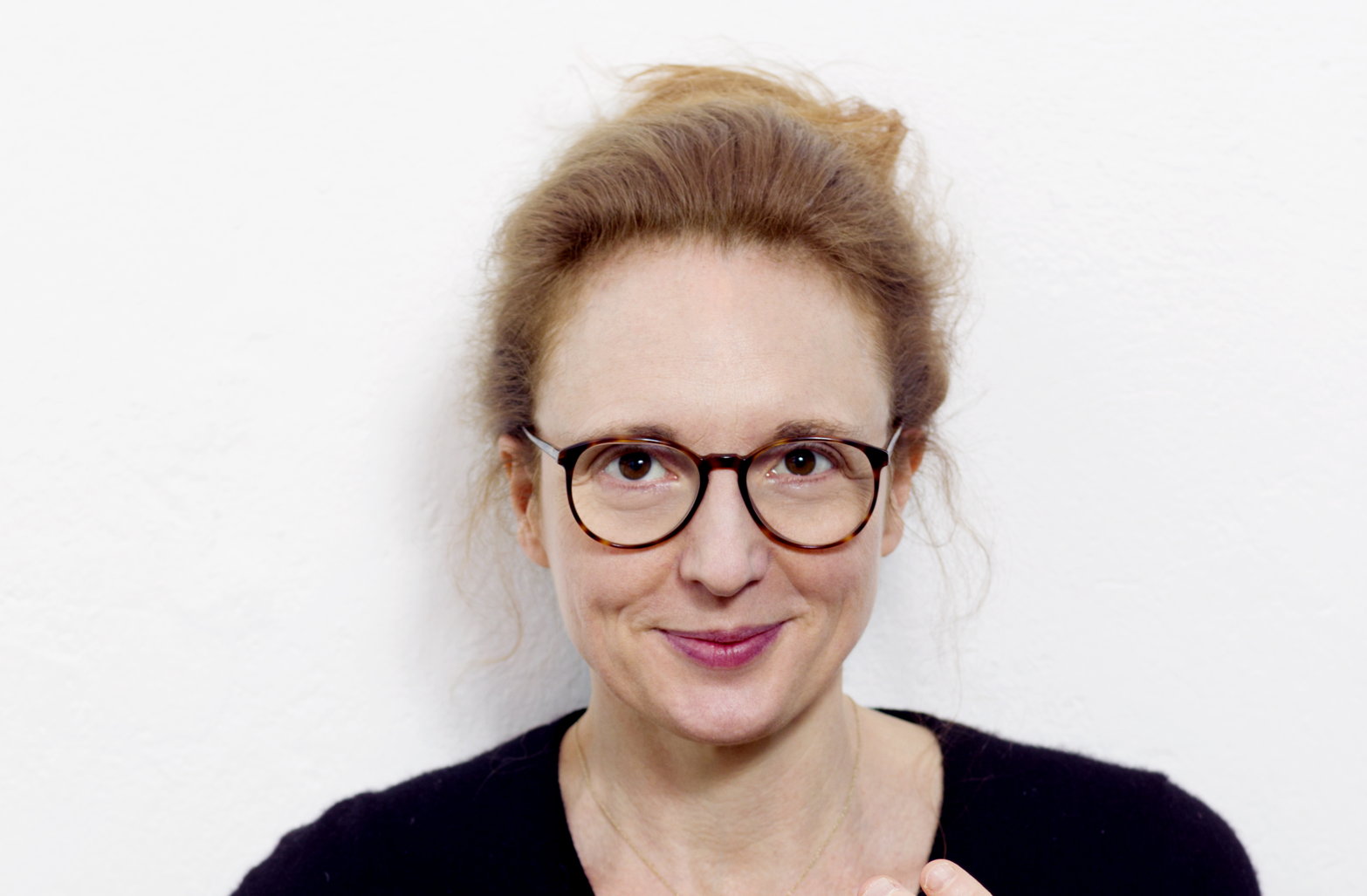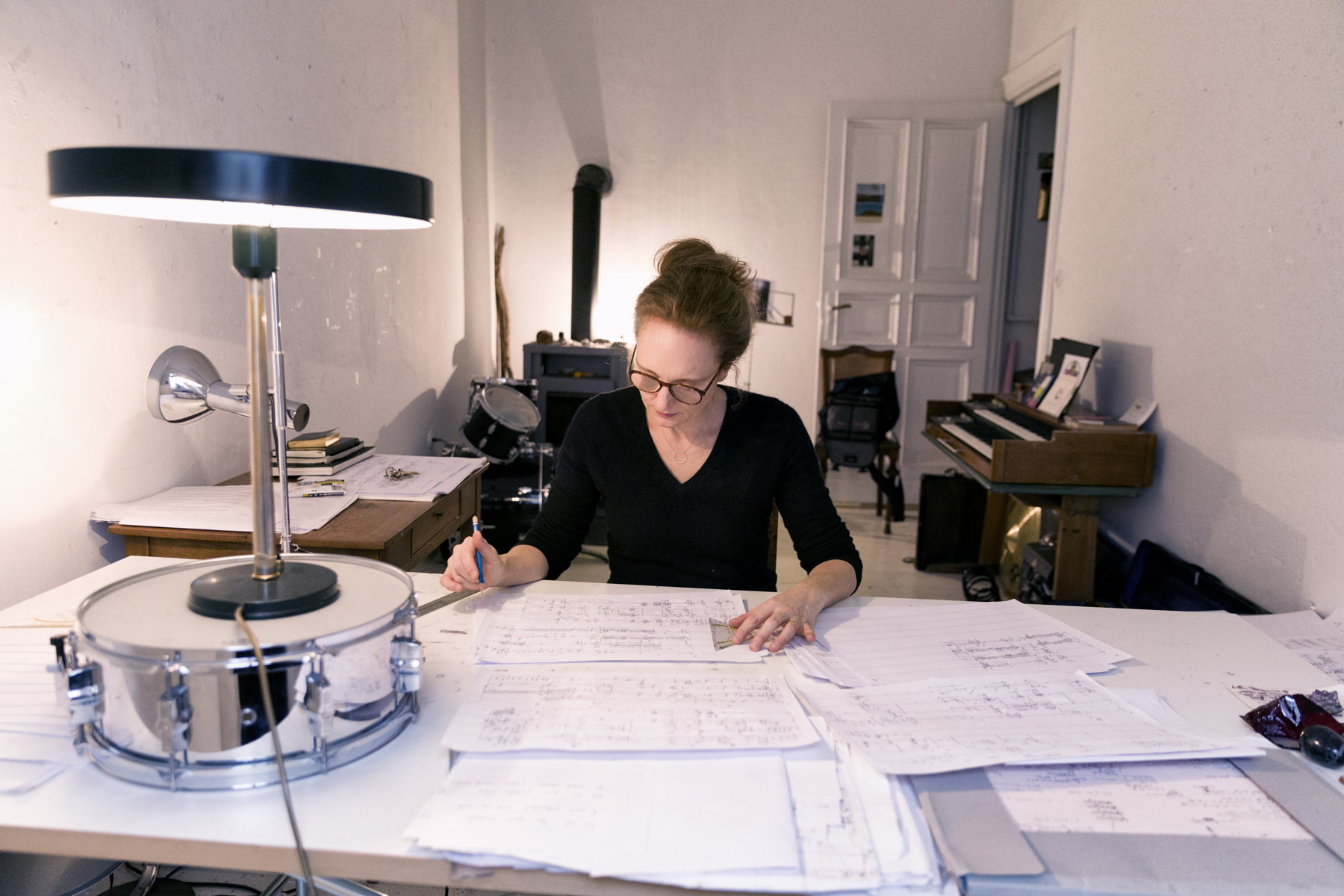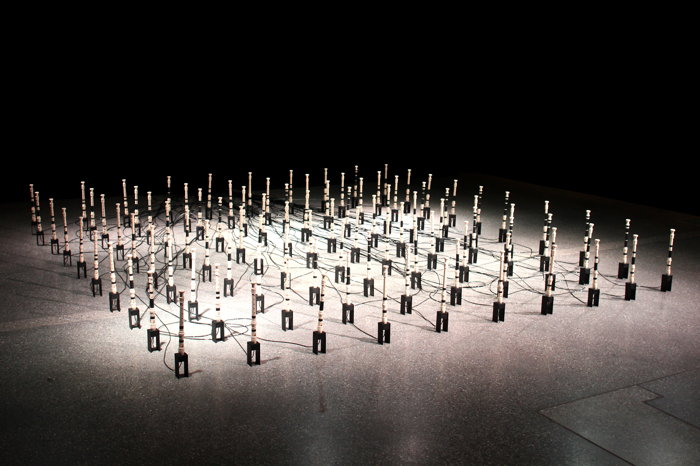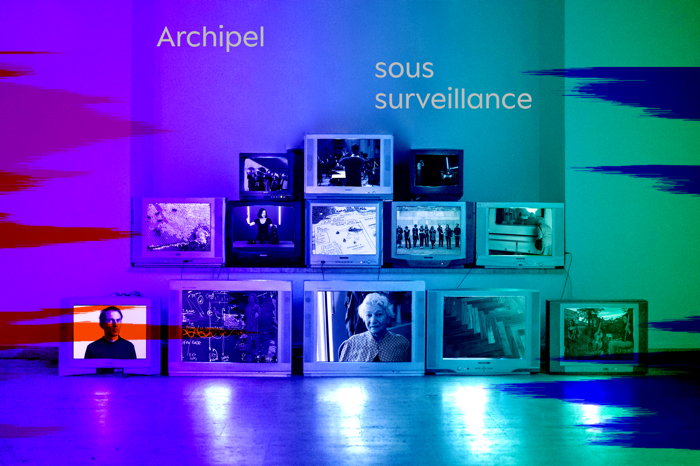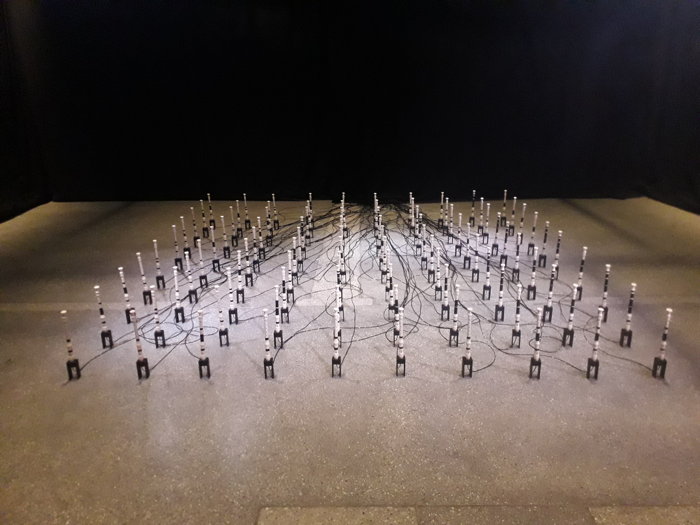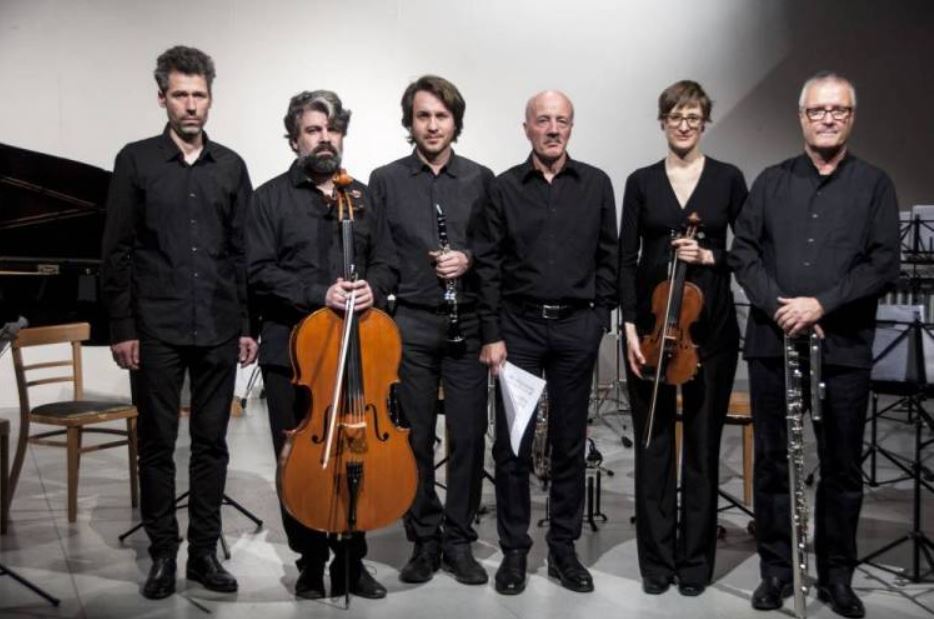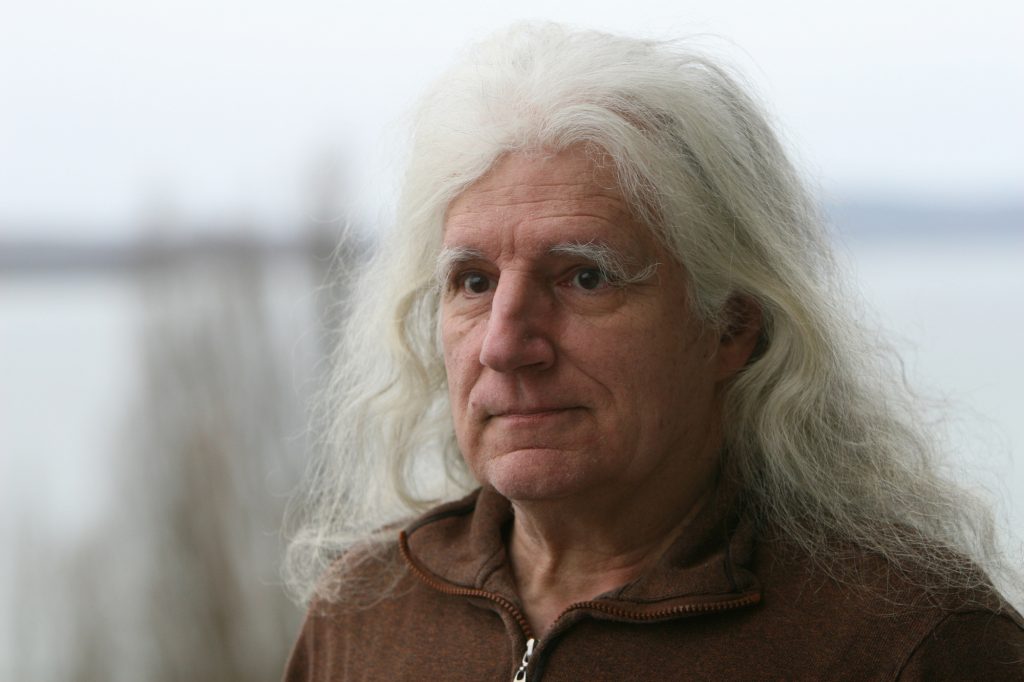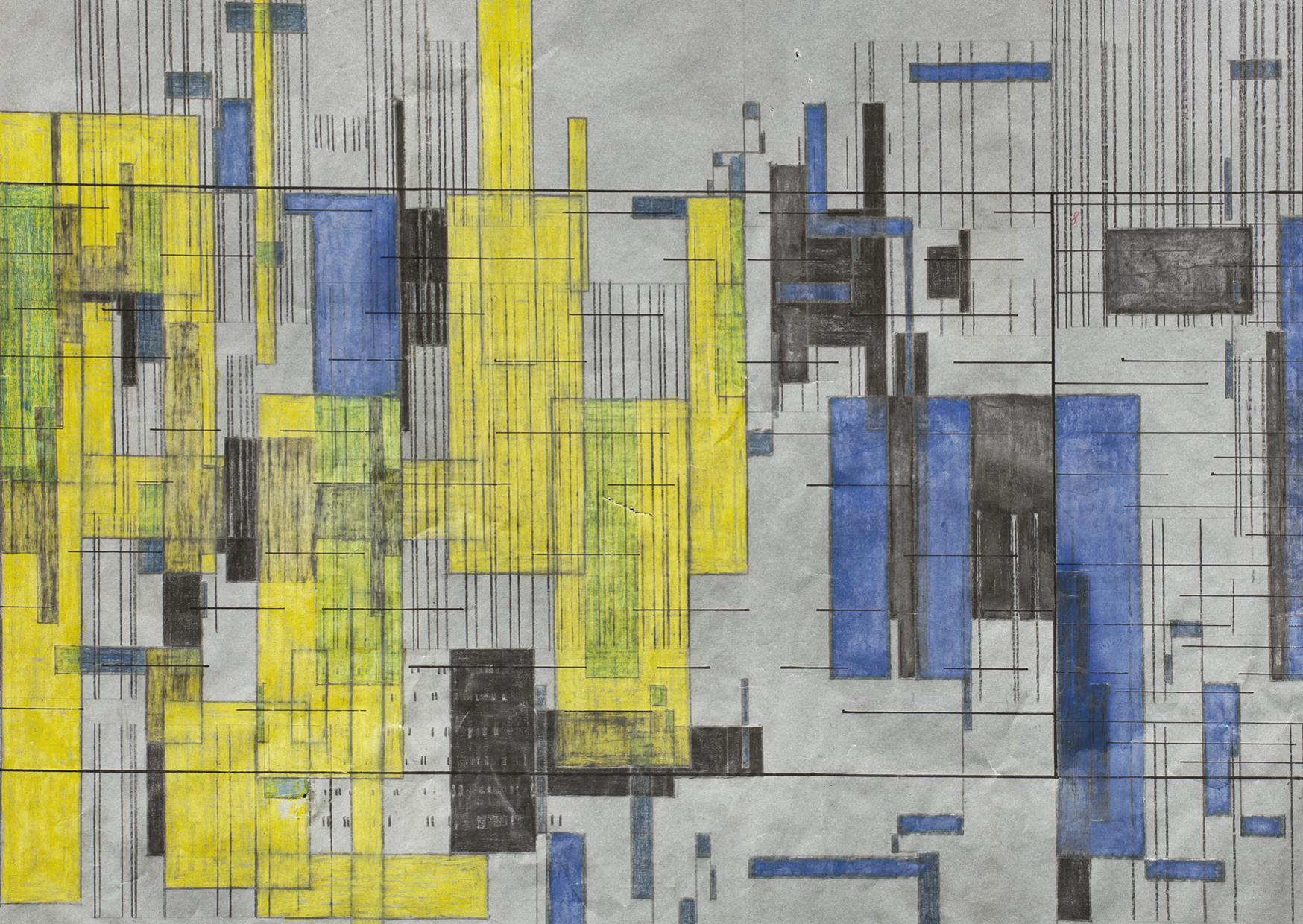He mixes sound, performance, video and theatre with cooking, sport, thrillers and environmental activism. Young composer Léo Collin born in France and now living in Zurich, produces evocative music theatre happenings. I visited him in his studio, located in Zurich’s Rote Fabrik.

Gabrielle Weber
Most of his small studio is taken up by a simple wooden table, covered with a control desk, microphones, headphones, cables nd with an electric guitar leaning against it. Large, colourful sketches hang on the walls. This is where Léo Collin develops his music theatre pieces, which are always site-specific, i.e. performed in the great outdoors, industrial spaces or petrol stations.
Léo Collin, Video: Fastnacht, Neue Musik Rümlingen 2020.
Dressed in camouflage suits, performers storm down a grassy hill from a wooded area. They chase each other and perform almost choreographed actions. Fastnacht, a music theatre piece with electroacoustics, premiered on the green meadow at the Rümlingen 2020 festival, focuses on a community celebrating war games. The piece is characteristic of both his musical concept and workflow. Collins’ interdisciplinary site-specific music theatres combine sound with video, electronics as well as theatrical actions and the audience usually right in the thick of it.
“There was little time for the Fastnacht on site-rehearsals and the play was also performed several times, which required precise conceptual preparation and clear instructions for the performers”. The score for Fastnacht is an audio track that uses ‘in ear-headphones’ in order to assign individual actions to each performer. Roles that break the plot are built into the performance and the performers are followed by a sound crew with a microphone (Collin himself) and control desk. “By showing how a scene is recorded, I break the fascination. I like such meta-layers”, says Collin. For the live performance, each audience member receives headphones with live sound and a fictitious audio contribution: this soundtrack creates another meta-layer. ‘Many people play war games like this at home on the weekend. They don’t want to have to experience war themselves. I want to show these dualities’.
Fractured re-enactments
Collin creates fractured re-enactments which always come with a personal background: “The idea came from a photograph seen at Zurich’s Photobastei – a nondescript landscape with apple trees entitled ‘Verdun 2017′. My family is from that area. One of the bloodiest battles of the First World War took place in this idyllic landscape in 1916. But the photo shows a harmless subject”. A place always carries history, says Collin. “Through sound, I can add a completely unexpected layer to a picturesque landscape.”
Léo Collin grew up in a small village in the French Jura, studied in Lyon, Geneva and finally at the ZHdK in Zurich, initially musicology, then piano, electroacoustics and composition. He composes electronic music for theatre and dance, including for Schauspielhaus Zurich or Deutsches Theater Berlin and conceives music theatre and educational projects, for example for the Sonic Matter Festival Zurich.
Collins’ work is always oriented towards specific spaces and mostly developed with a fixed group of musicians, the Kollektiv International TOTEM (KIT). He usually also performs himself, involving other musicians and artists. The audience is part of his pieces, it participates musically or is right in the midst of it, surrounded by loudspeakers or equipped with headphones.
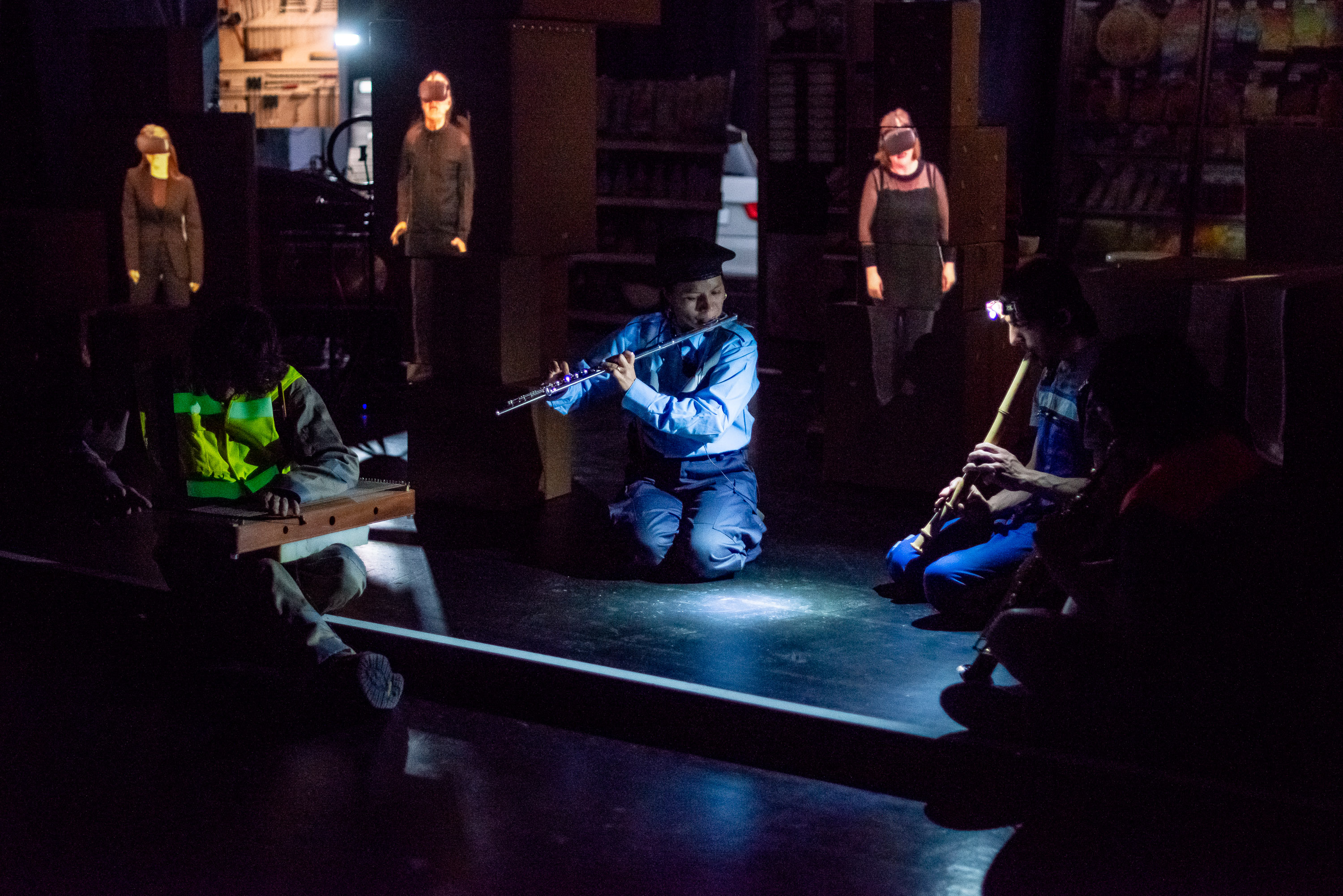
Meaningful places
Locations are also essential in his trilogy, a three-part scenic work entitled Baleen, Medusa and Corals. Corals, the third part, is set in a petrol station, for example. It is the human counterpart of coral reefs, microcosms like cities that appear out of nowhere and grow continuously. “In the vast plains of the USA or Australia, there is often nothing for a long stretch and then suddenly a petrol station full of people, food and petrol, while petrol embodies environmental destruction.”
Léo Collin, Corals, music for Gas stations, Ensemble Inverspace, in house-production SRG SSR.
Trilogie’s general theme is the concern for biodiversity loss. The three titles Baleen, Medusae, Corals – whales, medusae, corals – stand for different sea creatures and their biospheres. “It’s about the food chain in ‘web food’: the big ones eat the small ones,’ says Collin. “In my youth, ‘No future’, i.e. criticism of capitalism and consumerism, hovered over everything. Today, the topic is still with me.”
Medusen took place in a trashy industrial building on the outskirts of Zurich. The audience is divided in four groups, wearing headphones and guided by devices on their mobile phones or by an actor, walking through various rooms in the footsteps of a past crime.
A jigsaw puzzle of events
The plot consists of a jigsaw puzzle of events: in the first part, Balleen, between self-awareness group, sports event or TV cooking show, in the second part, Medusen, between crime thriller, concert and reality show: “I was involved in very different things before I started with music. In Trilogie, I explore my childhood and youthful memories and translate them into sound,” says Collin. “As a child, for example, I often sat in front of the television and usually watched sports. I later realised that the commentary is what gave it that kind of magic. My work confronts these memories with contemporary music in the hope of some kind of emancipation.”
Léo Collin, Trilogie: Balleen, Corals, Medusen
Trilogy has accompanied Collin’s musical path for many years. The piece is constantly growing, proliferating and changing – like the biospheres within the worldwide web food.
Gabrielle Weber
An extension of Fastnacht, the music theatre Blind Test, will be performed at the Neue Musik Rümlingen Festival together with Kollektiv International Totem and Hyper Duo on August 24 and 25, 2024.
On 19 June 2025, Léo Collin and the Collegium Novum Zurich will once again devote themselves to biodiversity in Plankton, a music theatre for performers, ensemble and mobile audience (2025, world premiere at Zentralwäscherei Zurich).
neo-profiles
Léo Collin, Kollektiv International Totem (KIT), Neue Musik Rümlingen, Hyper Duo, Sonic Matter Festival, Collegium Novum Zürich


